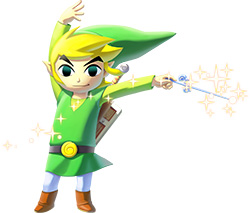Platforms: Dreamcast, PS2, XBLA
In one of my first posts I exposed my distaste for the punctuation system used in videogames. As I said, my opposition stems mainly from videogame reviewer's reluctance to give marks below 6 and the 1 through 10 standard reliance on a mythical perfect game. This perfect game is, per se, impossible, and using it as a measure, therefore, pointless.
Although I remain adamant that perfection is unattainable, I request permission to exercise my right, as human being, to contradict myself by stating that Rez is, without the slightest doubt, a perfect game. Its perfection, however, does not arise from the impossibility of improving it -I'd gladly accept one or two extra areas on par with the ones available- but from the fact that any enhancement it received would fail to add anything to the experience as a whole. Rez can only improve by becoming larger, prettier or more literate, but none of these changes would make it any better than it already is. This is clearly demonstrated by playing the HD version available for the Xbox360. It looks better, sounds great, is panoramic and has a couple extra features, and remains exactly as good as the PS2 or Dreamcast versions ever were. I still play the PS2 and HD versions from time to time, depending on which one is at reach, and can't fault any of them.
 |
| Rez, gloriously low res |
Players first learn to shoot. And shooting feels good because it produces a nice, simple note. Shooting up to eight targets at once feels even better, as it creates a simple and beautiful tune: duru-ruprup, turaruraru. As enemies get bigger or closer together, the rhythm and tone get more frantic, luring the player into the musical frenzy.
Collecting items is revealed to be important because they are obviously different and shooting at them just sounds better. As if that wasn't enough, accruing eigth blue items (less in later phases) transforms the avatar into progressively more detailed depictions of completeness and tranquillity AND awards you extra lifes. There is no indication of how many impacts you can sustain, but it can be instinctively guessed. Collecting red orbs turns out to be useful too, as each one, up to four, becomes a short-lived, powerful auto-shoot at your request.
 |
| It's mine, my precioussss |
That's it. With just one verb (or one stick and two buttons), sound cues and simple graphics Rez is able to completely explain itself in the first five minutes of gameplay. As levels progress, the wording gets more frantic, but the meaning remains the same: the enemies are instruments and you have to compose art. The music and graphics, although fundamental to the game, never take the focus away from the core, and only work to enhance it.
Music is simple and integrates with the frequency and spacing between enemies. Your shots are synchronised to the music, and so is the whole of the screen.
The background and reticule are rendered in wireframe -and a subtle glow when aiming, so that enemies and other targetable objects can be easily identified. Enemies feature simple shapes, almost iconic, with the most distinctive being tentacled beings composed of hundreds of small squares. Whether this minimalistic approach was a matter of hardware limitations or a choice made long before development started I can't tell, by I can assure you that contention in the graphical area was the best thing they could have done.
 |
| Simply beautifil of beautifuly simple? |
Beyond shooting, Rez offers variety in the form of mutating levels, mixing different possible configurations each time a level is played. After dozens of hours spent in its world I am still surprised by combinations I had never seen before.
 |
| The man changes its behaviour depending on your proficiency |
Conclusion
I can't create the chart right now, but as soon as I can, I'll upload it. Spoiler: Rez is at the top and Child of Eden is dangerously close the bottom.
EDIT:
 |
| Here's the chart. |
* Marvel has sadly reduced the word "astounding" to meaninglessness.














